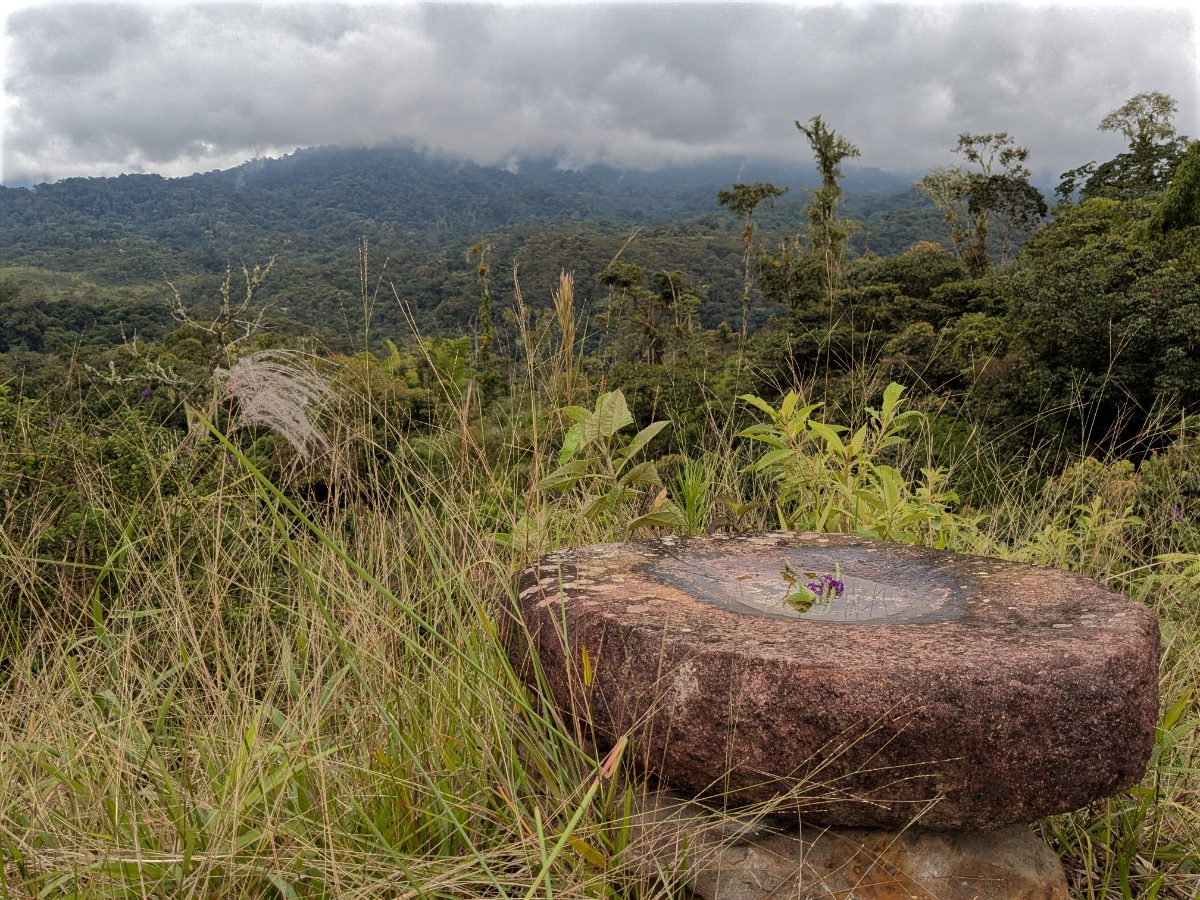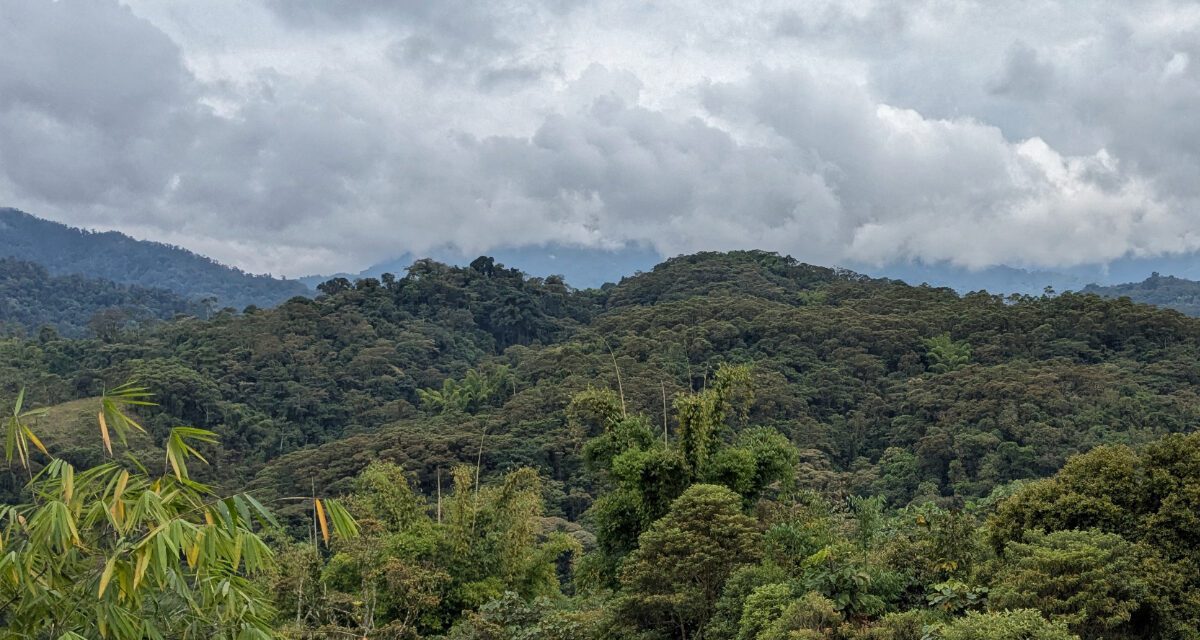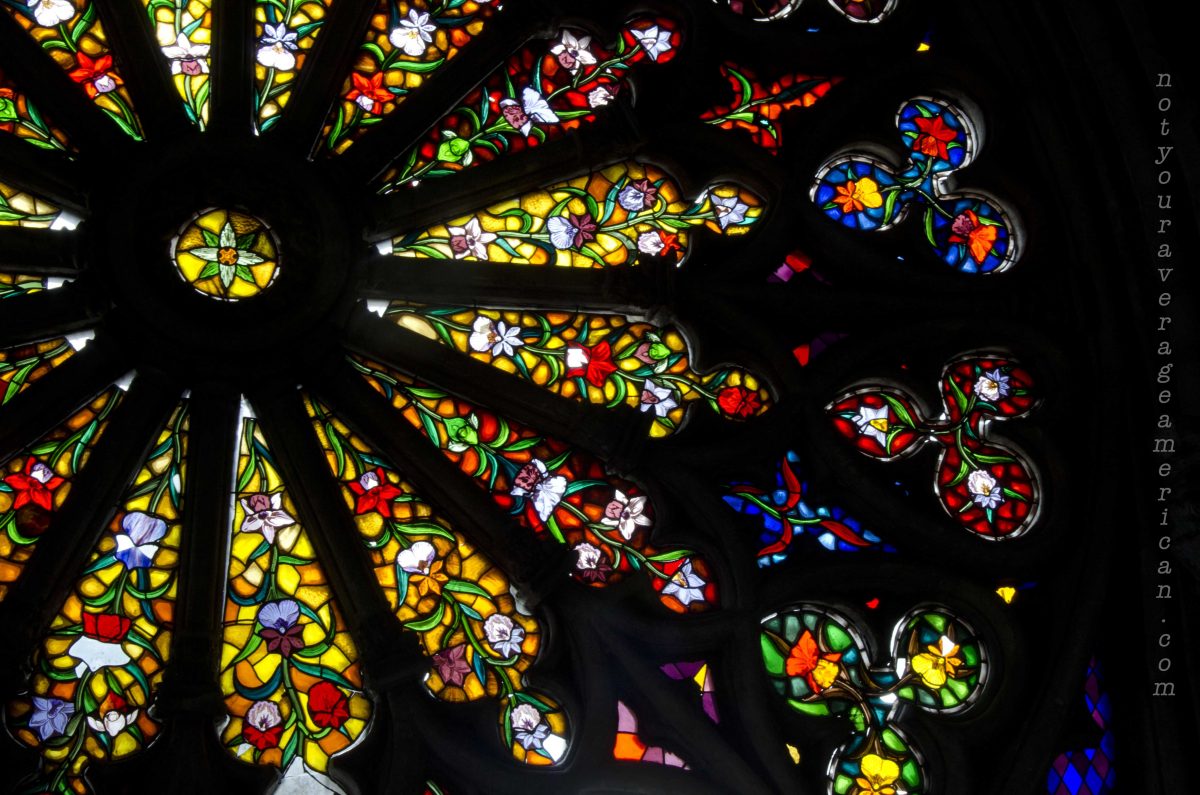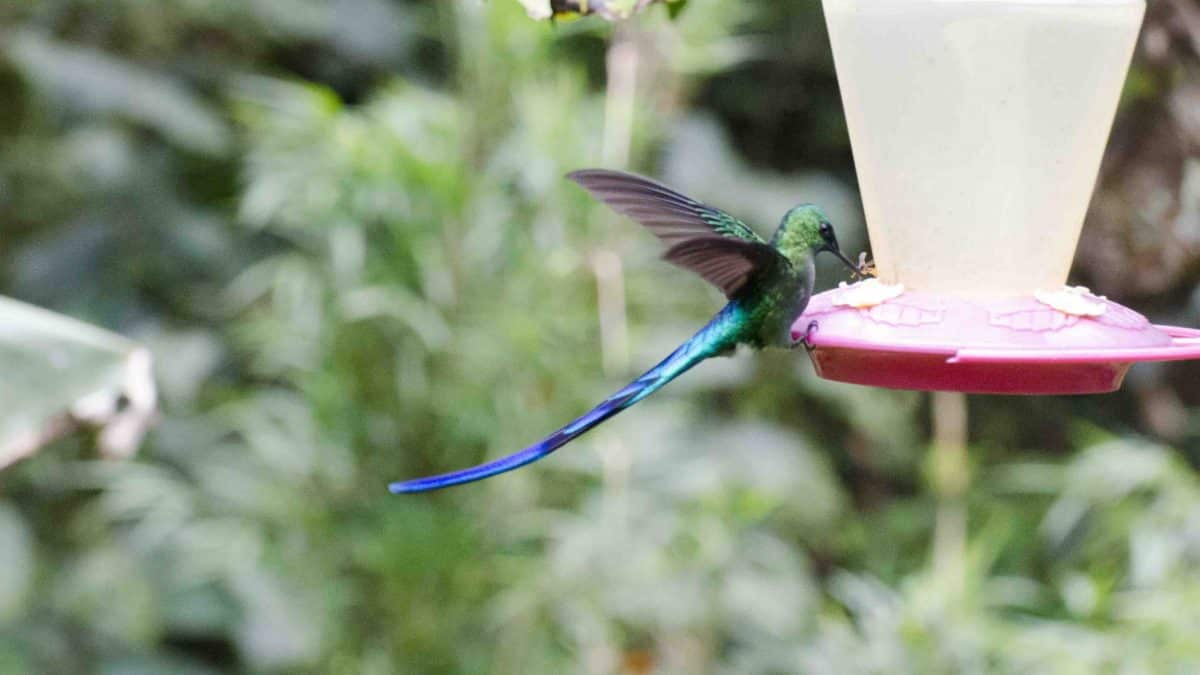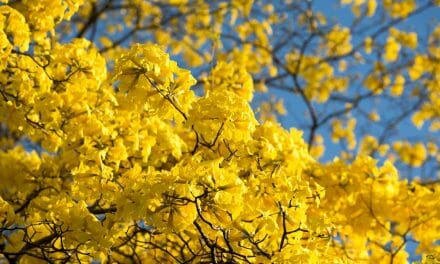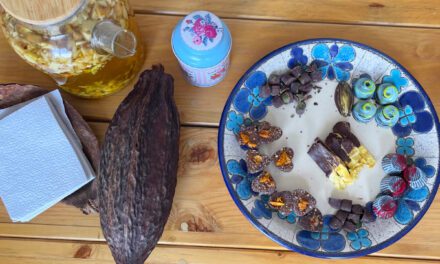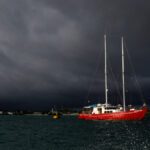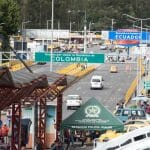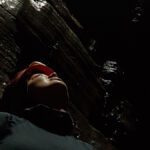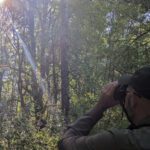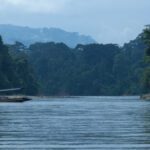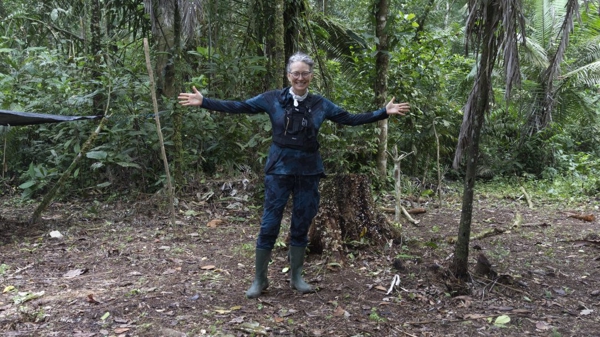First published on July 24, 2025 • Last updated on December 4, 2025
This page may contain affiliate links; if you purchase through them,
we may receive a small commission at no extra cost to you.
The Wayra Reserve, a relative newcomer among birding destinations on Ecuador’s East Slope, exemplifies regenerative tourism at its best. Founders Graciela Erazo and José Vega Pérez are farmers recognized in the region for their award-winning cattle. At first glance, they might seem like the antithesis of conservationists, especially in an area where primary Amazonian forest is rapidly disappearing to make way for grazing land. Yet their story defies expectation.
We first met Graciela and José at the South American Bird Fair in Mindo, where Graciela extended an open invitation to visit their property near the Cordillera de los Guacamayos on Ecuador’s Andean East Slope. Life and travel had other plans, and it would be nearly a year and a half before we finally made our way to Wayra Reserve.
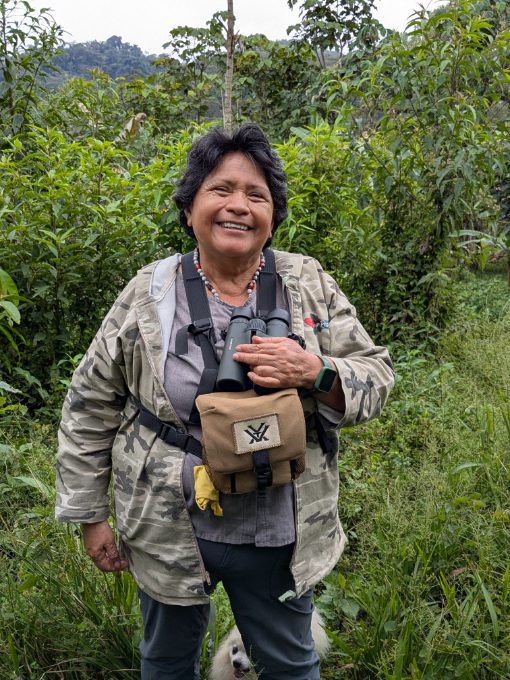
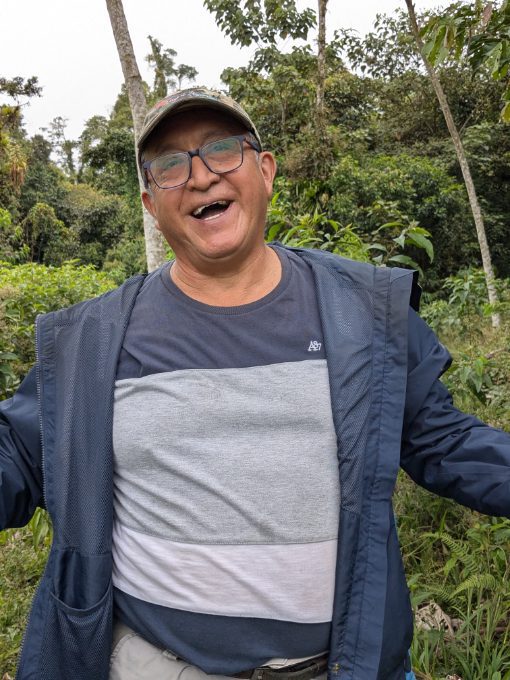
Visiting the Wayra Reserve
We arrived on a partly cloudy morning to find the gate wide open, as if waiting for us. I had assumed our friend and guide, Angel Nuñez, had confirmed the visit; he thought I had. In truth, neither of us had called ahead! Yet Graciela welcomed us warmly, binoculars in hand, ready to share the wonders of their property.
We organized our gear in the small, sheltered dining area surrounded by flowering plants and lush gardens. Then we headed out on a short trail to a bird blind in a reforested section of the property.
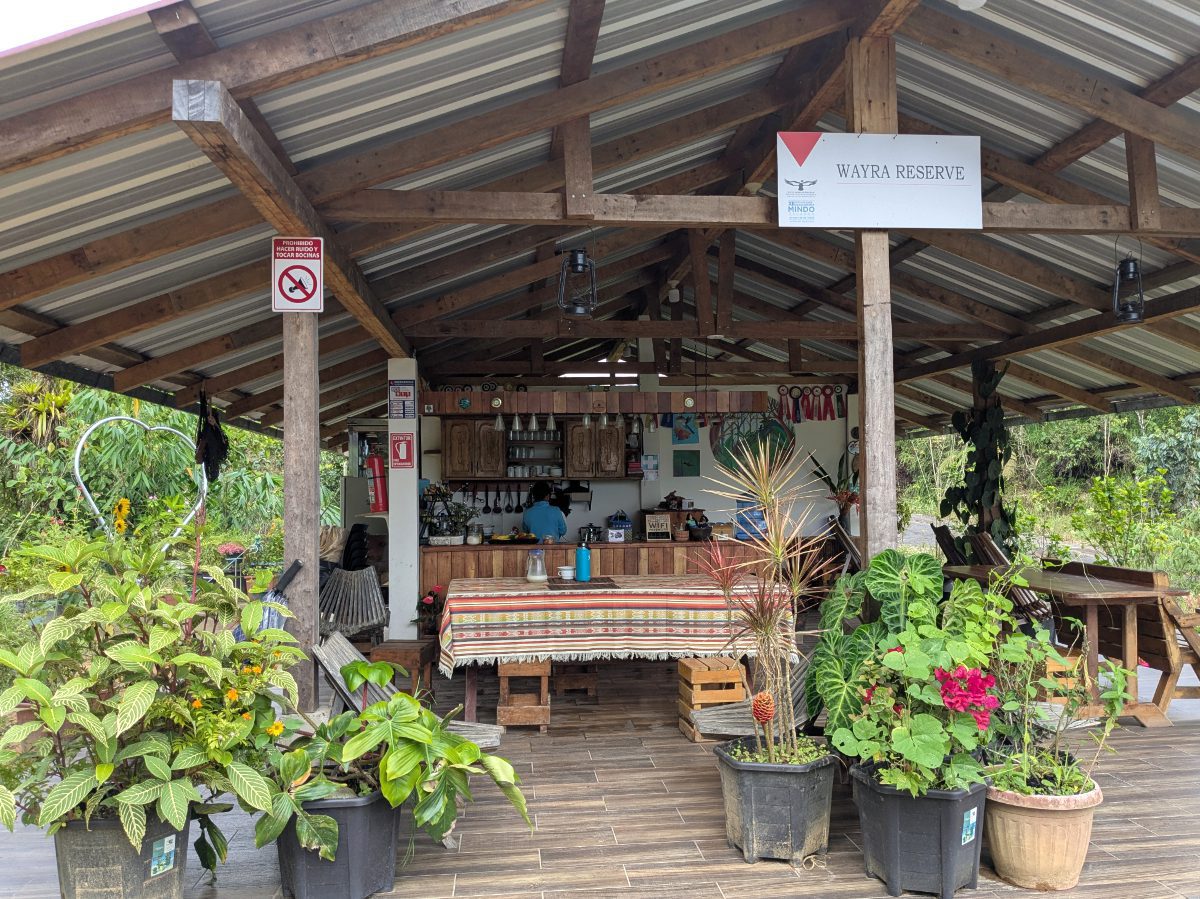
We could hear birds singing in the forest, though it seemed there was little interest in the plantains lined up at the blind. Could be that we were not the quietest group on this day. Graciela and I were keeping up a running conversation, both interested in each other’s work.
Despite chatting, Graciela was the first to notice a small bird with a shocking, shimmering red crest. She was very excited and so were we. It was a lifer for Scott and me—a Red-crested Finch. Our photos on this day do not do any of the birds any favors. It is one reason I prefer to stay a couple of days at a location, so that I can scope out the area, find the best angles, and wait (without talking for the birds to approach. A professional bird photographer I am not!
Out of the corner of my eye, I spotted a Black-throated Mango that would flit to the nearby feeder. We could hear the racous calls Russet-backed Oropendula. With Graciela’s help, we identified a few tanagers, including the gorgeous Paradise Tanager. And Scott and I had no problem identify the White-tipped Dove that came to visit the corn feeder on the ground below.
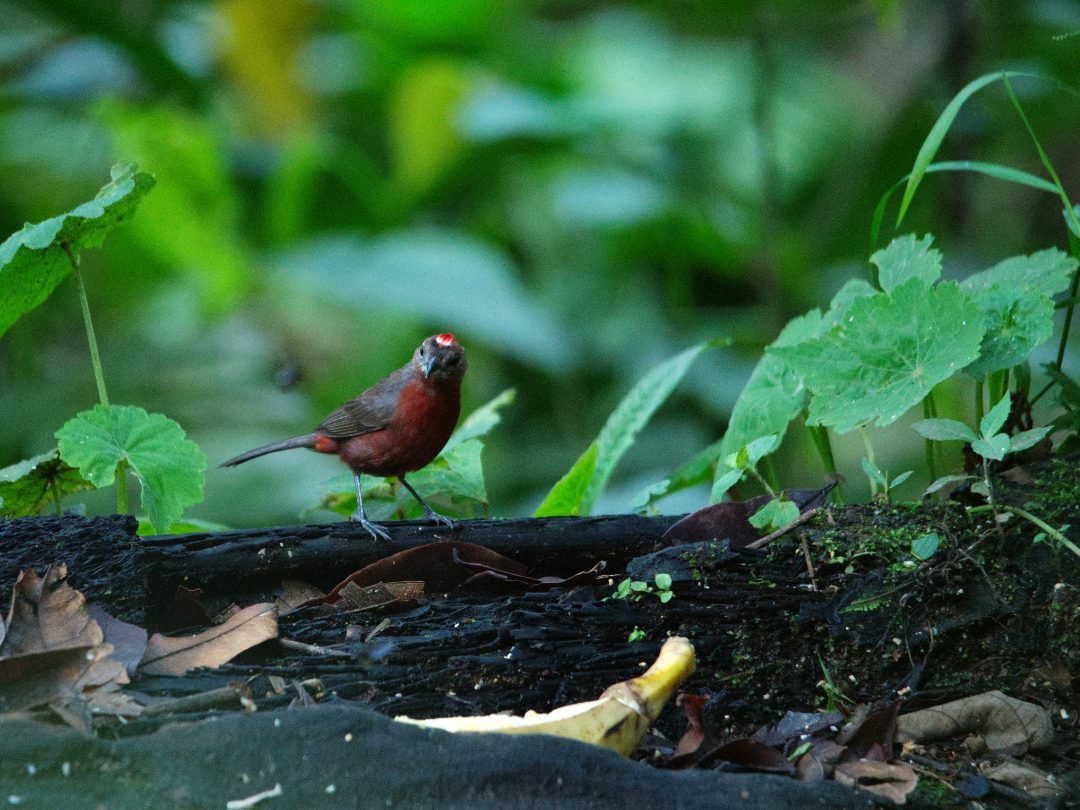
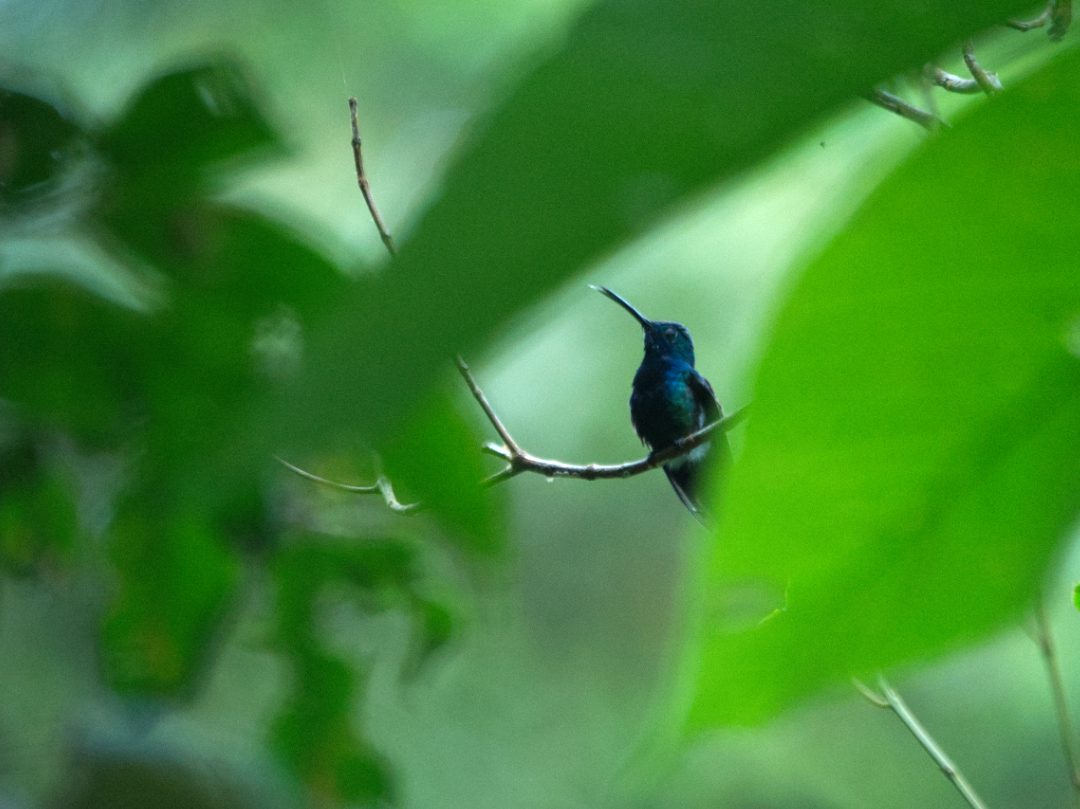
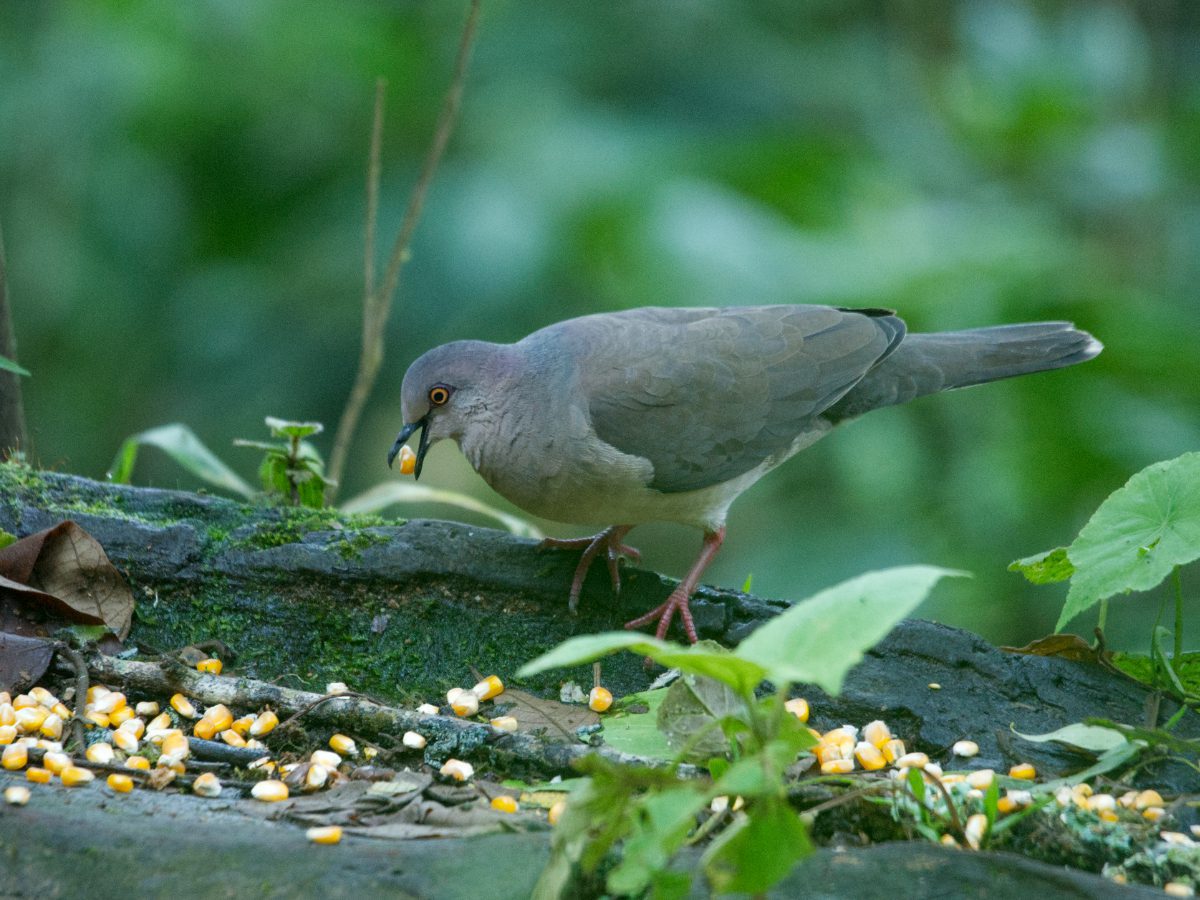
Wayra Reserve Has More Than Birds
But our attention was quickly stolen by another subject: a family of Black-mantled Tamarin Monkeys.
They hovered in the background at first, teasing us with quick, peek-a-boo glimpses until they finally decided we were safe enough to approach. Then, in a sudden burst of energy, they came closer, leaping from branch to branch in search of food. Graciela told us they are common visitors—not guaranteed, but with a good chance of showing up if you’re lucky.
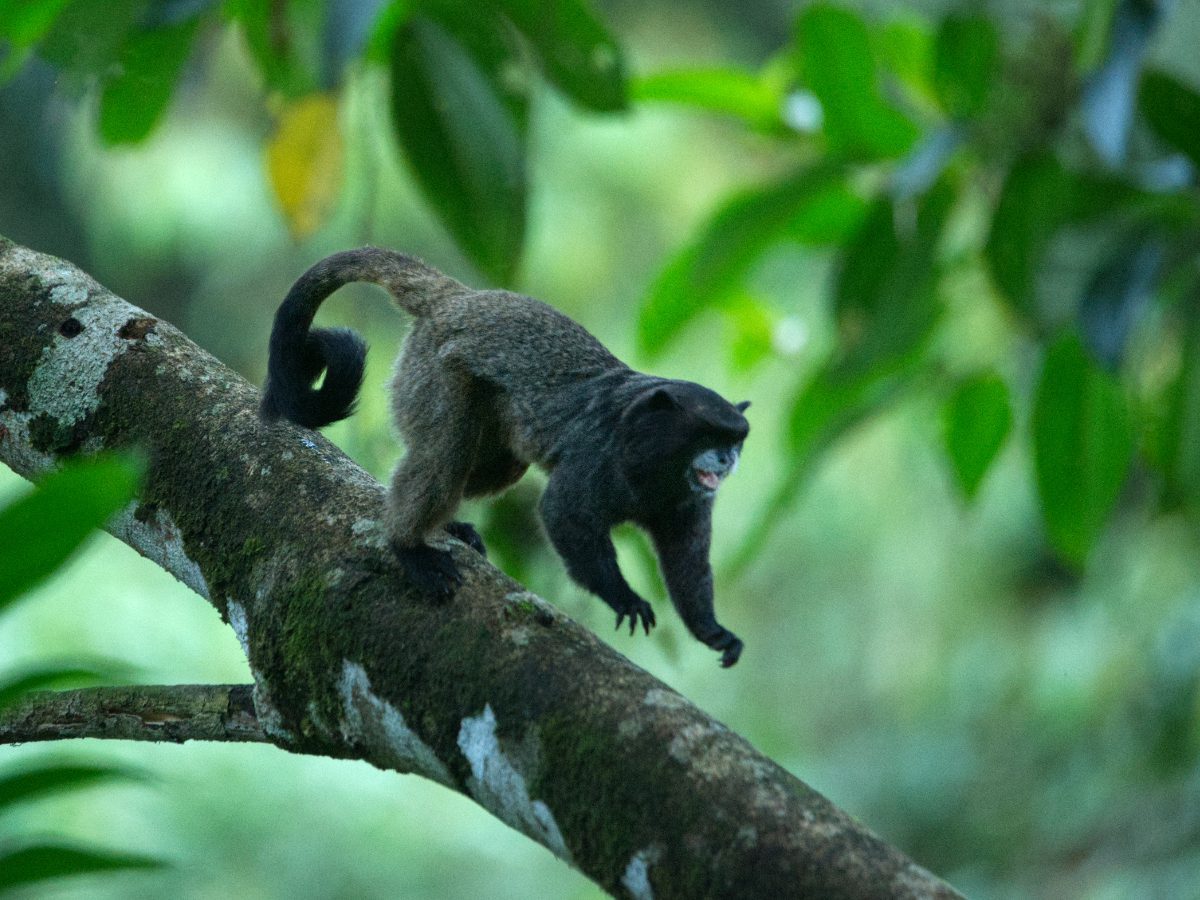
In between the exciting moments, Graciela and I continued our conversation. I wanted to learn as much as I could about her story. It is not often I get to meet a women leading the way in bird tourism. As she saw my interest, she leaned forward, her expression calm but animated as she spoke to me in Spanish.
For decades, they proudly raised cattle. But despite winning awards, something changed for both Jose and Graciela. They wanted to create a place where they could live, and that included having trees instead of pasture. So they started planting.
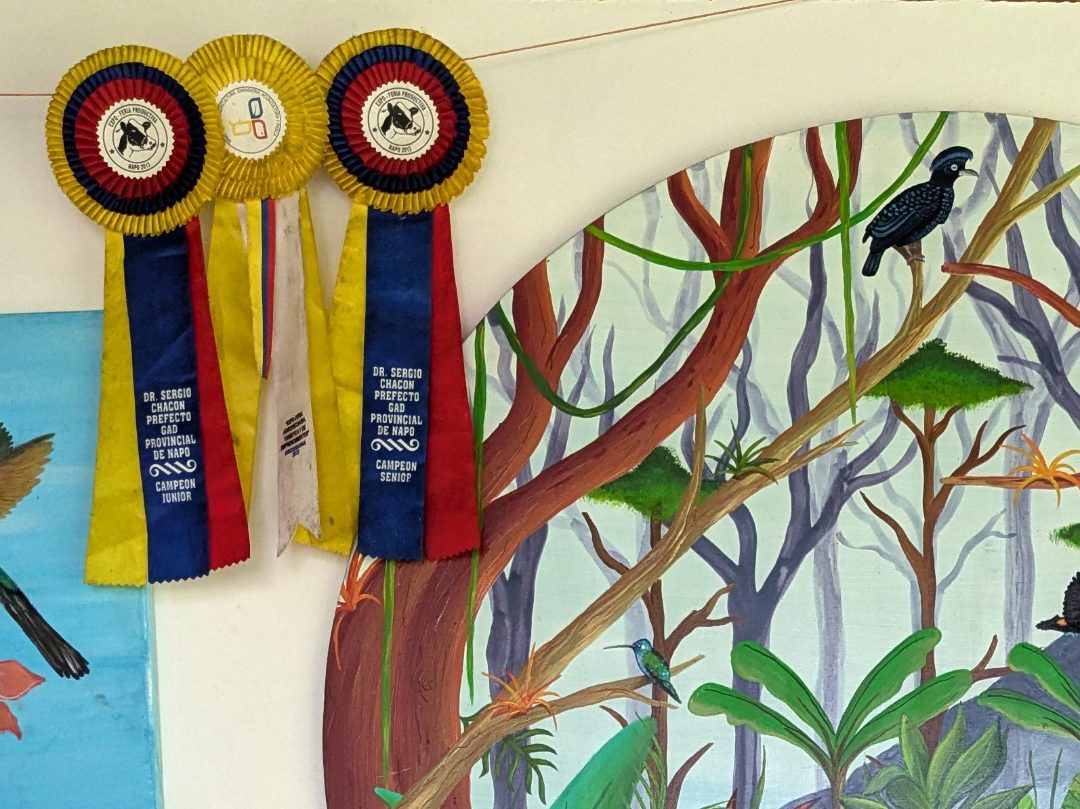
We’ve been working on this project for about five years,” she told me. “The main focus for us has been reforestation… and we’re continuing that work.
They aren’t planting just plant any trees. They have done their homework. In a later conversation with José, he shared his strategy – to talk to community elders and ask them for help. “We’ve done a lot of research… to find out which plants the birds fed on, and in which seasons, in which months.” They gave him a list of native plants to start with. Today, they cultivate wild avocado, canelo, and pinchimuyo in their native plant nursery. These trees feed wildlife, shade out the non-native grasses, and provide beauty.
Today, more than 200 hectares of their 350-hectare property have returned to forest. Walking the trails, it’s hard to imagine it as open pasture. The canopy hums with life, and the monkeys seem to approve. But Graciela reminded me this isn’t a quick process—it’s a lifetime commitment. They are planting trees that their grandchildren can enjoy, even if they may not.
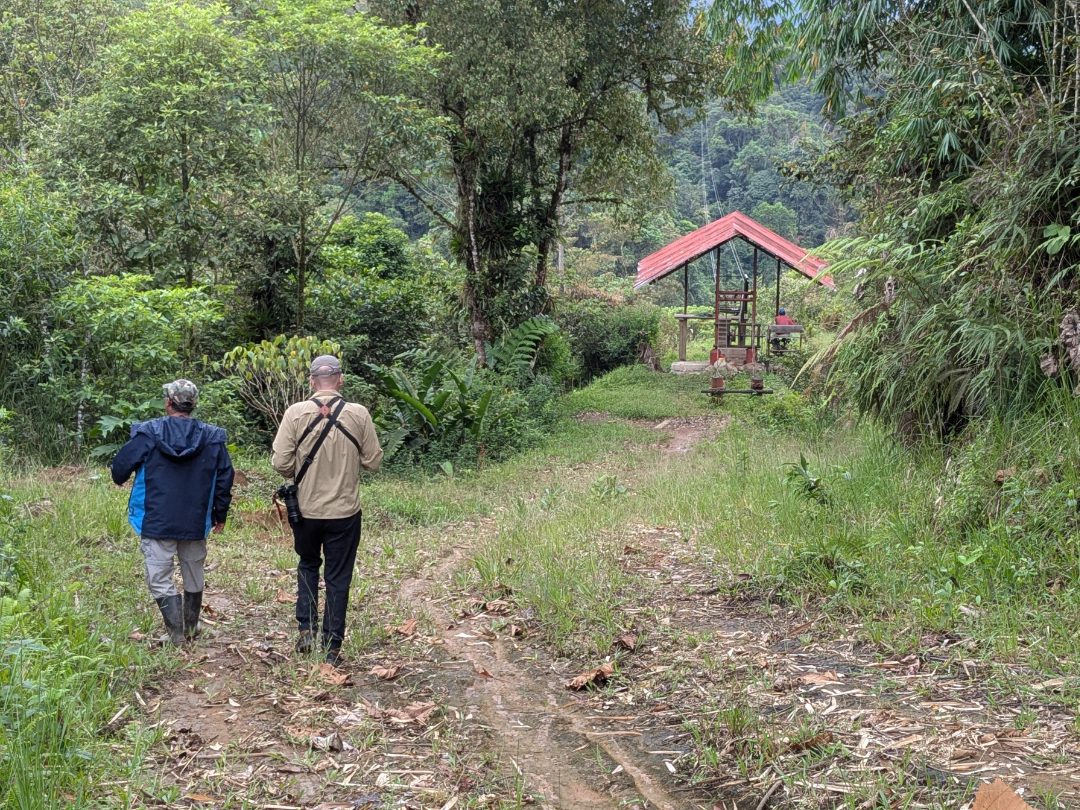
Onward to La Tarabita (the Cable Car)
We left Angel at the blind as he wanted to photograph birds. Graciela wanted us to see the tarabita, a small cable car connecting two distinct areas of their property divided by the Jondachi River and its valley below. If you decide to visit, our recommendation is to plan time for hiking on the far side of the property, where it is possible to see more birds along the trail that is very near the Guacamayos Ridge.
We climbed into the open box, protected only by metal rails around the edges. A staff member sat at the controls in a chair that looked like a tractor seat. The motor was about the size of one that might run a lawnmower in the United States, and a lever or two to put the contraption in motion. Sometimes, we choose to skip these excursions when we are less than certain about certifications and maintenance. But Jose and Graciela do everything by the book, so we climbed aboard. Jose and one of the dogs joined us for the trip across.
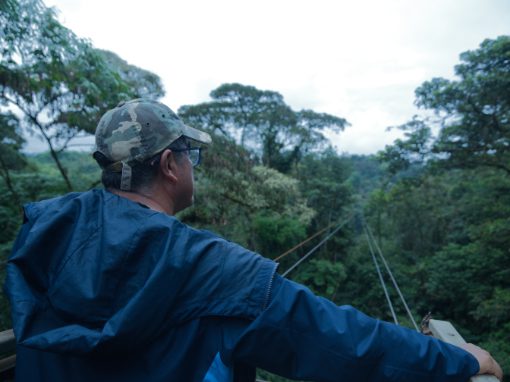
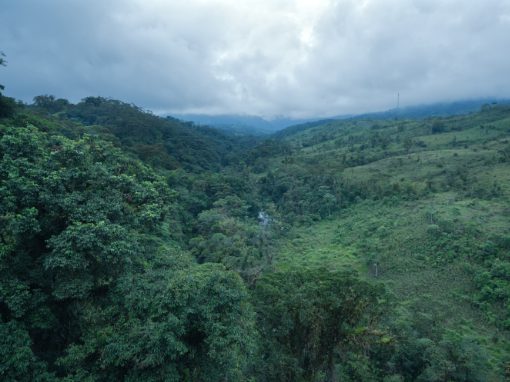
From this height, it was easy to note the difference between cattle pasture and primary or secondary forests. In the former, the hills are denuded, with toothpick-like trees sticking up on fuzzy green hills covered by humps of grass and brush. By comparison, the forests were dense, lush, and glowing with every hue of green imaginable. From directly above, we could see the rushing water of the Jondachi, a favorite for kayakers and rafters.
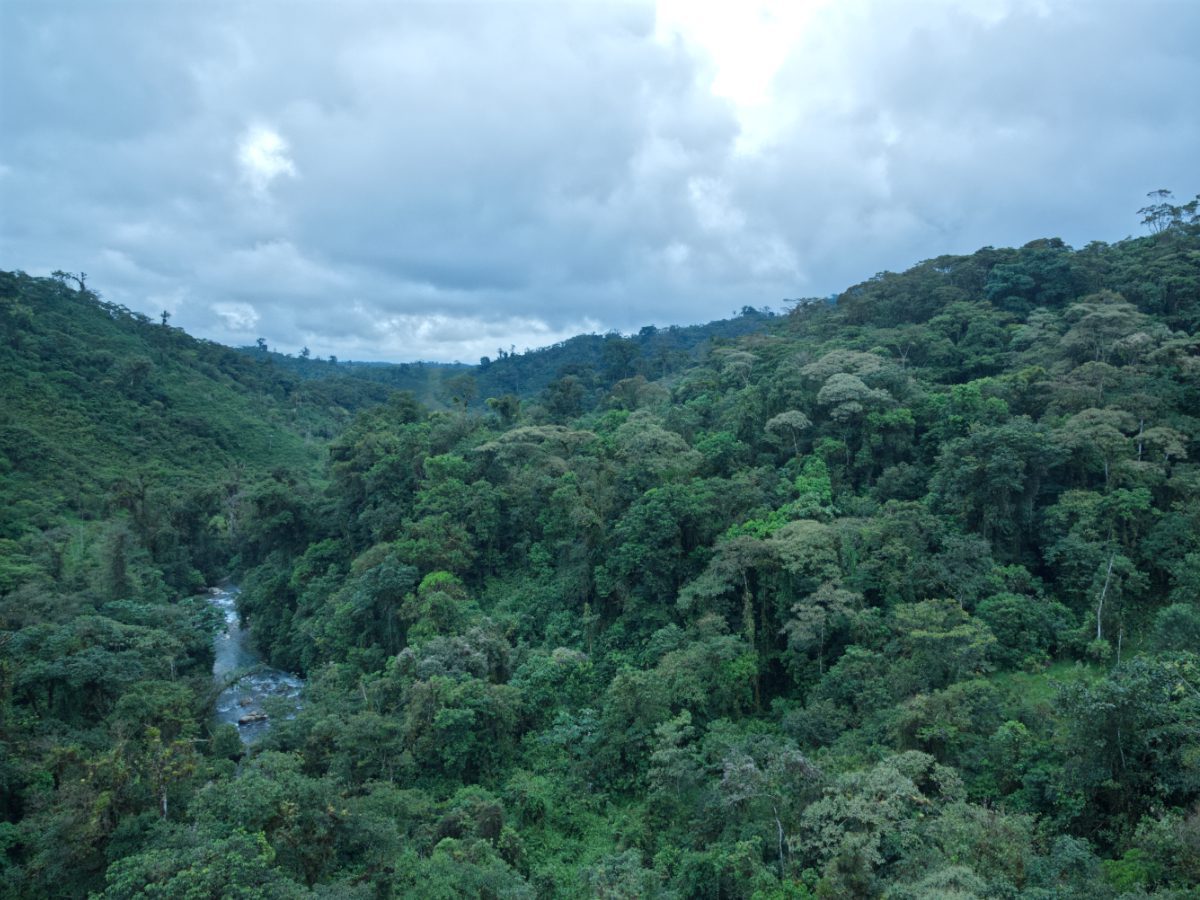
José gestured toward the dense canopy stretching away from us, explaining the importance of protecting this wildlife corridor, a living bridge for species moving between fragmented habitats. It’s part of what makes Wayra Reserve so vital. Reconnecting these pieces of land gives monkeys, pumas, jaguars, and countless birds a fighting chance.
Restoration and Regeneration
For those of us who support organizations like the Sierra Club or Audubon, these ideas feel familiar. We often join conversations about restoring habitat, rewilding rural landscapes, and regenerating ancient wisdom into modern life. But here, in Ecuador’s Amazon, hearing this messaging from lifelong cattle ranchers feels extraordinary. It hints at a quiet tipping point in this small Andean nation—a shift that made me hopeful.
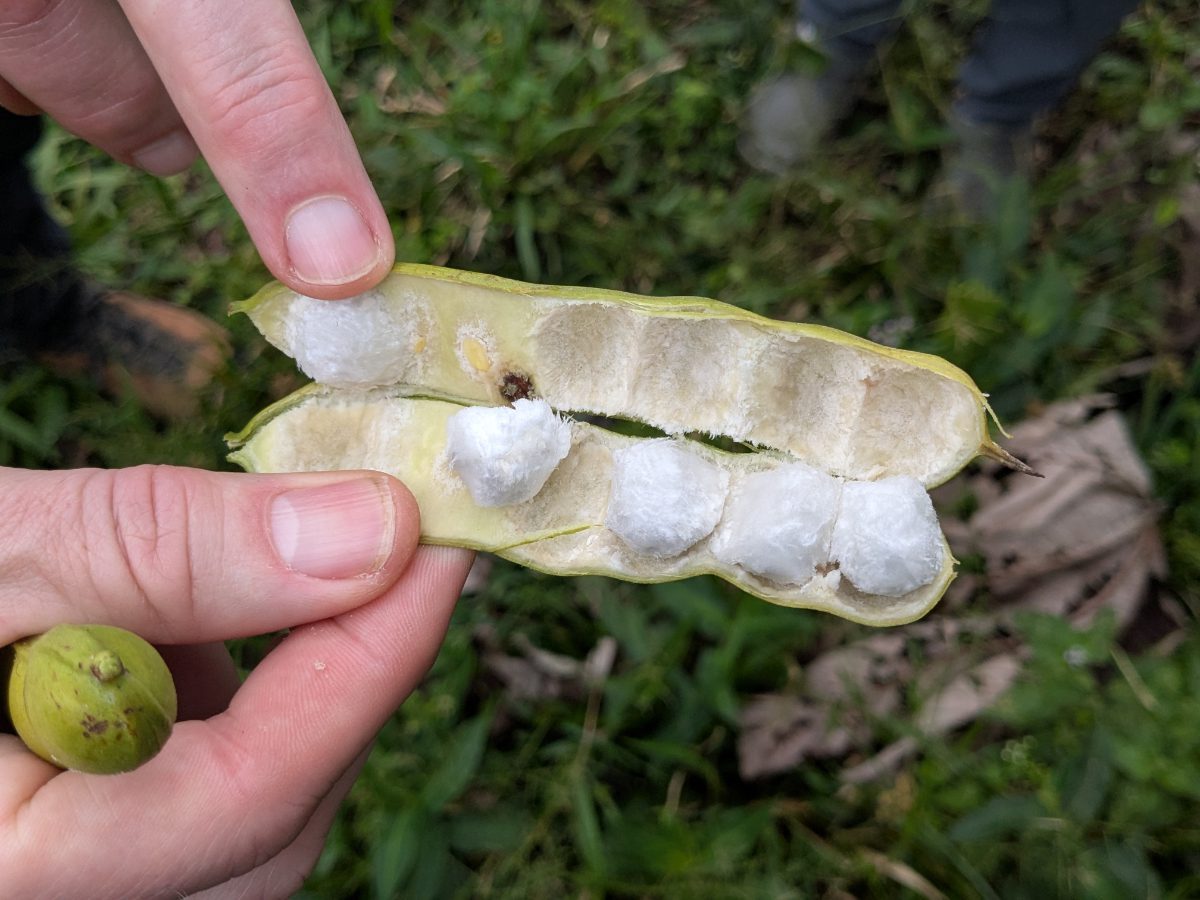
Before we left, José and Graciela walked us through a small orchard where native trees mingle with introduced species, each one chosen for the food it offers to birds, animals, or people. Along the path, a single egg lay in the leaf litter—a Common Pauraque’s fragile attempt at life. It felt like a sign: even in the most exposed places, survival is possible.
Farther along, José showed us his orchids—rescued treasures salvaged after storms brought down their host trees, now thriving in the shade of a simple nursery. The Wayra Reserve is simply bursting with life around every corner.
Our last stop was a place of stillness. We stood before an ancient stone carved to hold water, a humble shrine partially hidden among the drying grass. Each of us placed an offering—mine, a simple sprig of verbena—and paused to breathe deeply. In that quiet moment, I gave thanks for people like José and Graciela, who dare to reimagine what is possible, who choose restoration over exploitation, and who remind us that bold action often begins with the simplest belief: that change is worth the effort.
